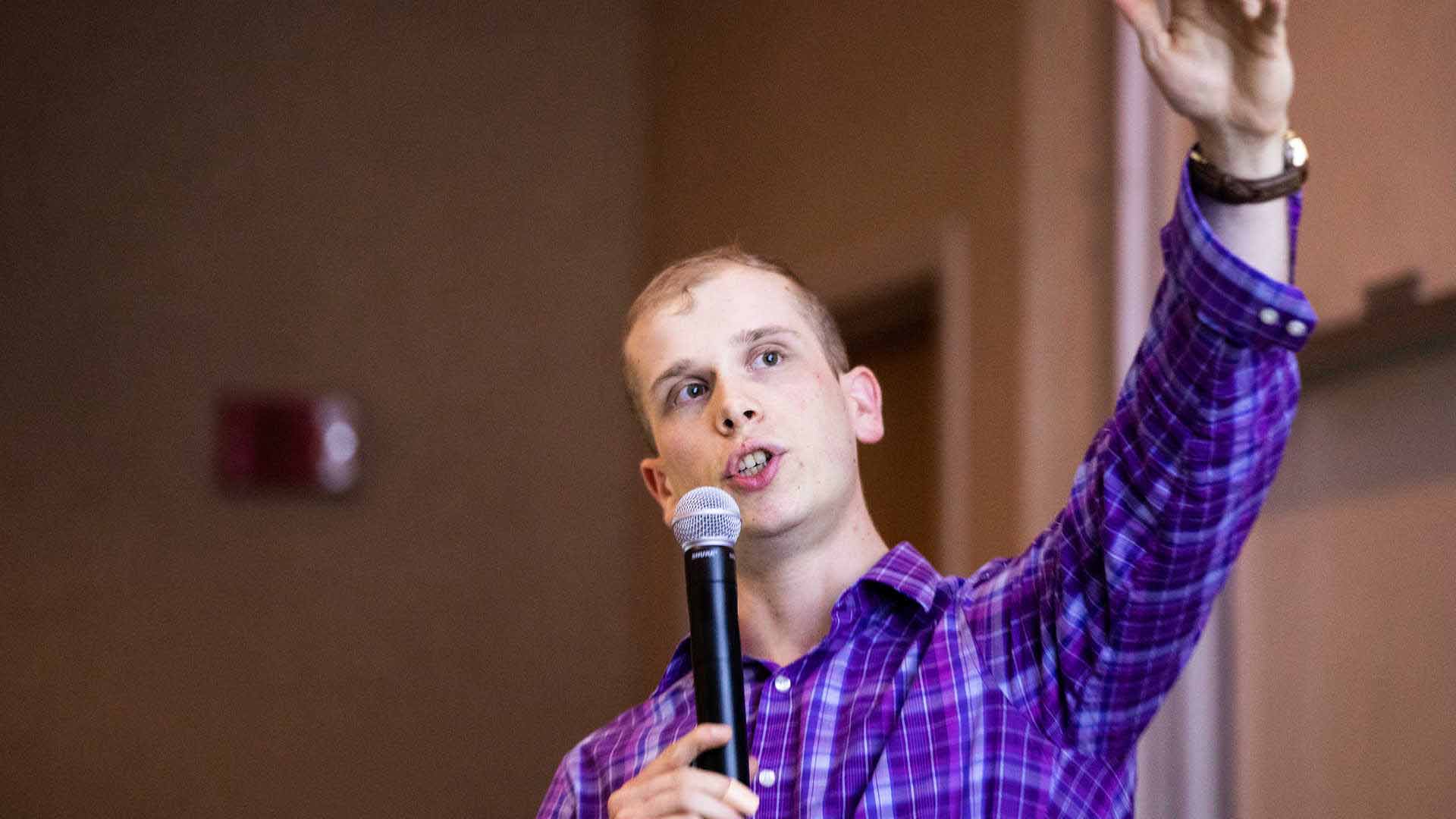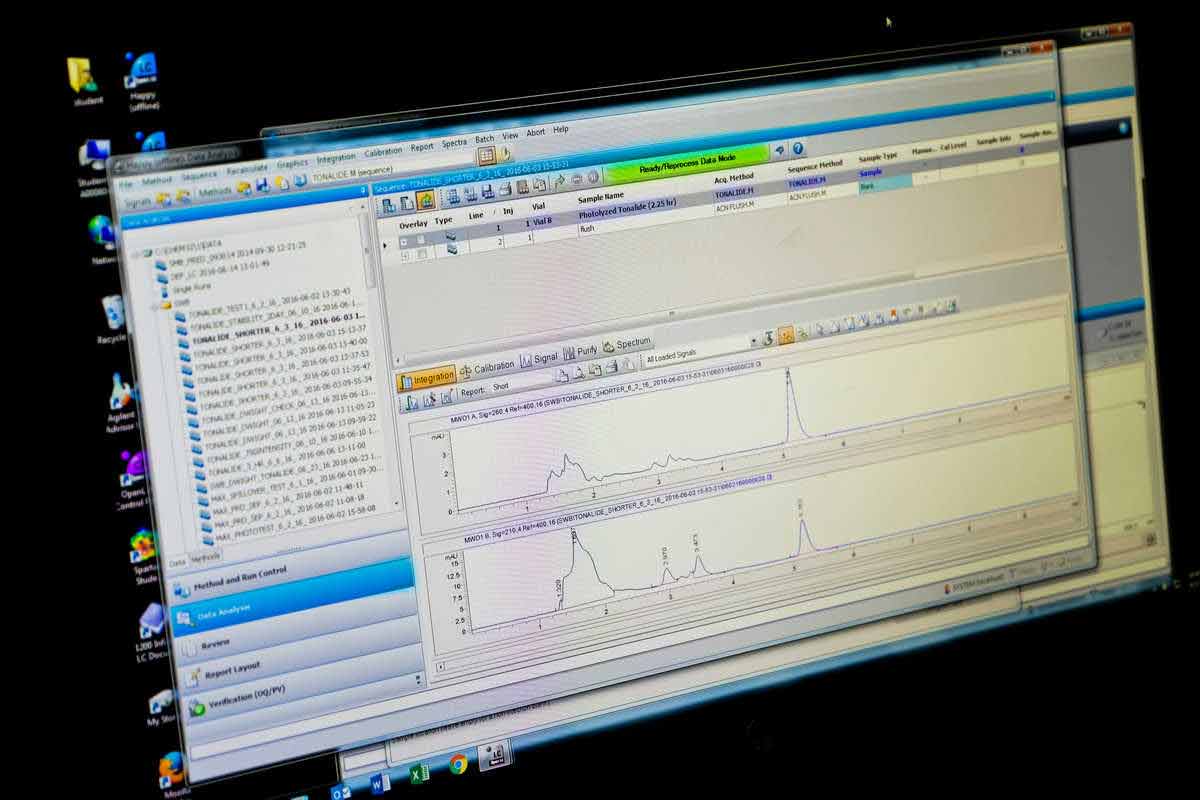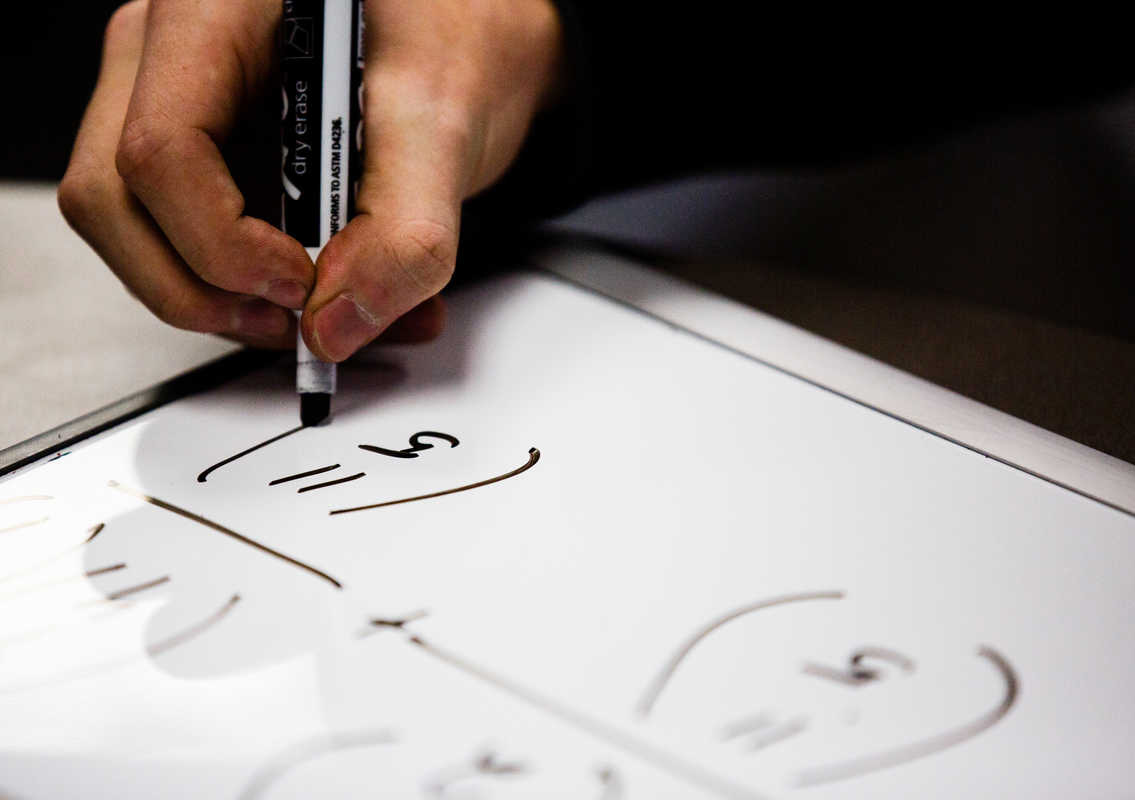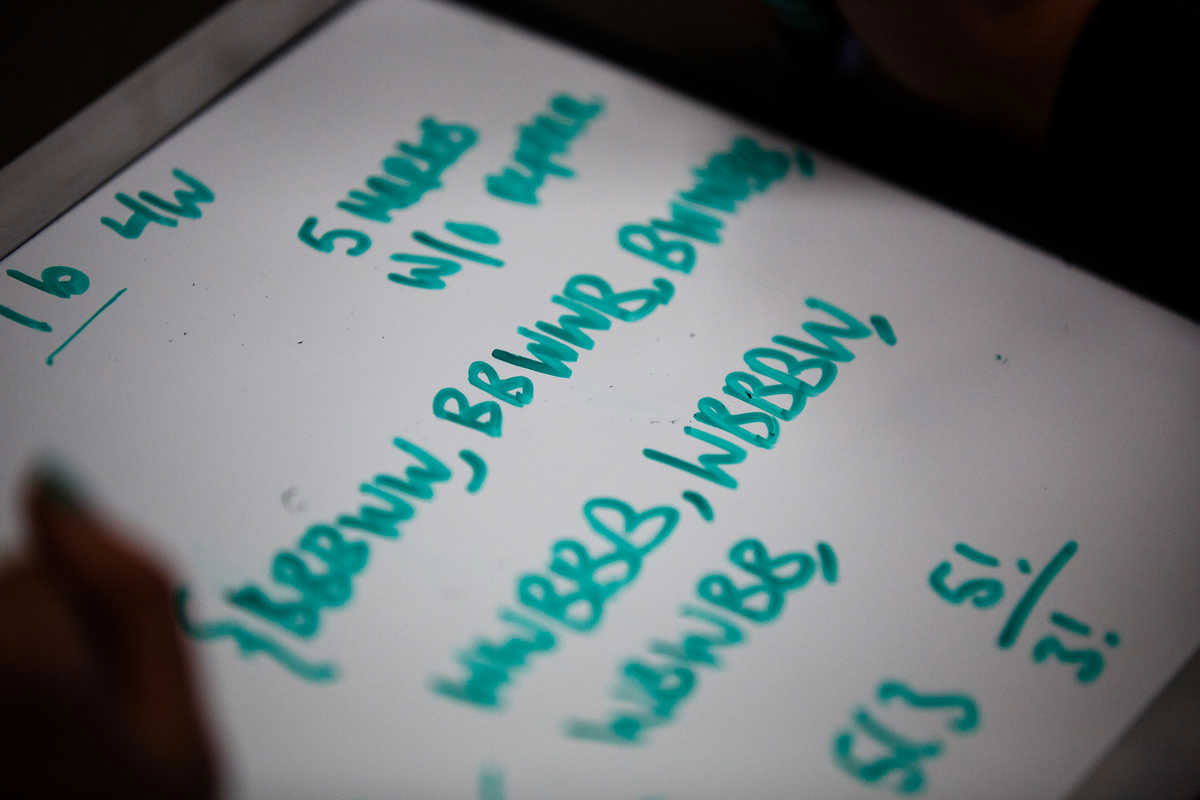The Center for Applied Mathematics’ Mission
The Center for Applied Mathematics (CAM) is an endowed center designed to increase student awareness of the applications of applied mathematics. The CAM supports student research and opportunities through the Summer Research Program, the CAM Industrial Opportunity (CAMIO) program and student-oriented colloquia and seminars. Students gain the training and communication skills needed for careers as problem solvers in the mathematical sciences.
As part of the Mathematics Department, the CAM draws on the varied expertise of the mathematics faculty, and works with outside organizations to design and direct student projects. Industry partners of mathematics can provide input and support to the CAM in the form of projects, student internships, undergraduate elective course design and research funding.
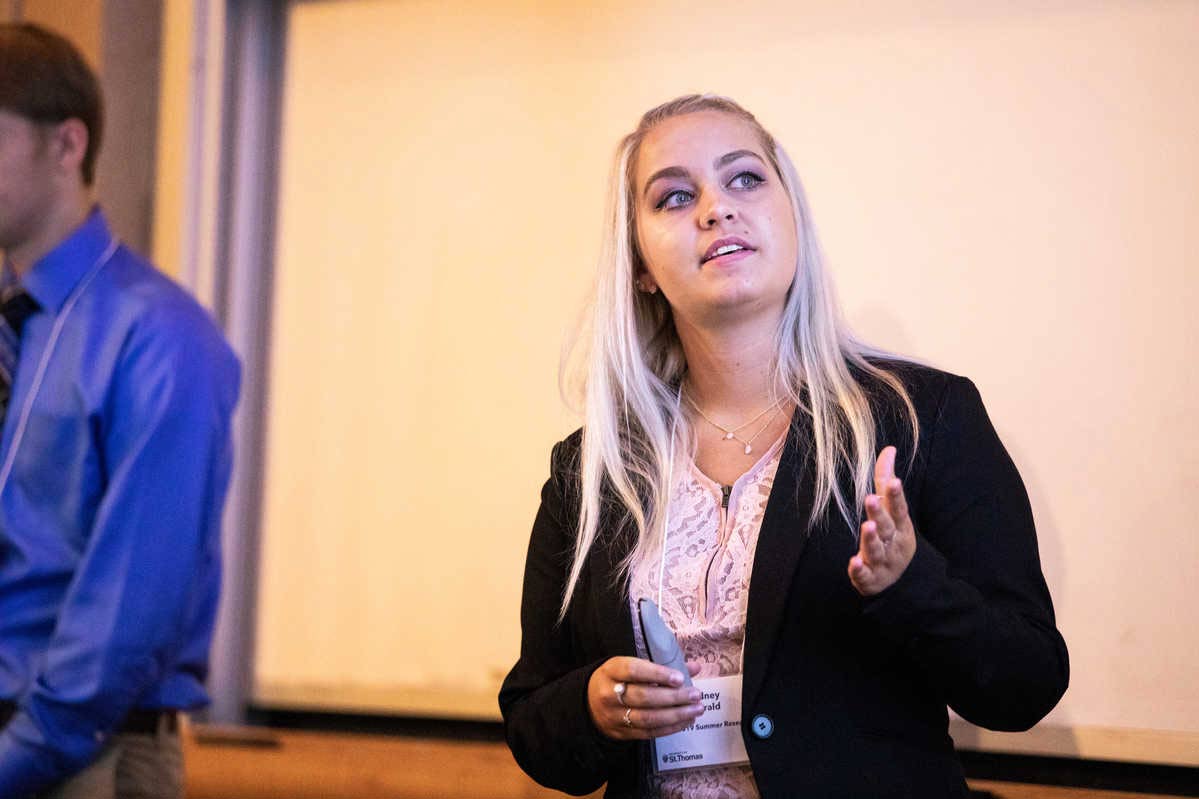
Undergraduate Research
The CAM supports, funds and encourages innovative research by undergraduate scholars. Through industry collaboration, the university can provide students with the training and communication skills needed for careers in a variety of fields. Students work closely with faculty, staff and corporate partners to define and pursue problems in all areas of mathematics.
Past Research Projects
2022-2023
- Quantum Tornado
- Updated Statistical Population Reconstruction of Moose in Northeastern Minnesota
- On the Regulation, Risk Management and Development of Reverse Mortgage Programs
- Modeling Agonistic Character Displacement in Meadowlarks
- Power domination
- Time Series Analysis for Worldwide COVID Mortality
2021-2022
- Modeling Chronic Wasting Disease Management in Minnesota
- Fast software to compute knotting in proteins and chromosomes
- Using numerical modeling to constrain the timing and duration of faulting in the Ama Drime Range, southernmost Tibet
2020-2021
- Statistical Population Reconstruction of Moose in Minnesota
- Quantum Methods for Macroscopic Weather Prediction
- Applications of Fractional Differential Equations to Magneto-Rheological Damper Models
- The Evolution of Interspecific Territoriality in Ficedula Flycatchers
- Knotting and Linking in Genomes
- Modeling Mechanical-Biochemical Interactions in Neuronal Growth Cones
- Unique Rectification Targets for Increasing Shifted Tableaux
2019-2020
- Modeling Nutrient Loss and Recycling in Urban Gardens
- Dimension Reduction for Generalized Linear Mixed Models
- Exploring The Use of Fractional Derivatives in Modeling the Elasto- and Visco-Plastic Behavior of Ductile Metals
- Modeling Co-Evolutionary Arms Races in Spatially-Structured Populations
- Probability with Dice and Spindle Whirls
- COVID-19 Excess Deaths Modeling
2018-2019
- Geometric Invariants for Bone Fragment Refitting
- The Source-Sink Dynamics of Coevolutionary Arms-Races
- Modeling Pollinator Movement and Behavior
- Thermodynamics and Statistical Mechanics of Tornados
- Examining the Topology of Text through Topological Data Analysis and Natural Language Processing
- Zero Forcing of the Generalized Hierarchical Products of Graphs
- Medical Loss Ratio Data Analysis
- Models of Economic Capital for P&C Insurance Companies
- Modeling Childhood in Social Learning
- Physical Knots
- A Regime Switching Model under the Heston Stochastic Volatility
- R Package Development
2017-2018
- Modeling Mining Impacts on Groundwater
- Best Practices in Peer Tutoring and Teaching Mathematics
- Conservation of South American Alligators using Stochastic Models (1, 2)
- An Analysis of Claims Behaviors
- R Package Development (1, 2)
- Using Statistical Mahalanobis Distance Metric to Classify 3D Objects
- Predator-Prey-Food Ecosystem Modeling
- Physical Knots (1, 2, 3)
- Modeling cell-ECM interactions during mesodermal cell migration in the Drosophila embryo
- Line Profile Estimation for Laboratory Astrophysics
- Copula Models of Economic Capital for Insurance Companies
2016-2017
- Extending the method of signature curve to 3D surfaces and develop algorithms to characterize and recognize images corresponding to solid 3D objects
- Higher Mathematics for the Visual Learner: An Introduction to the Differential Analyzer
- Hierarchy in Herds: Modeling Dominance and Subordinance
- Exploring what happens to propagation time of a directed graph when the orientation of one edge of graph is reversed.
- Modeling non-equilibrium properties of a tornado layer.
- Error Correction and QR Codes
- Using numerical modeling to constrain the timing and duration of faulting in the Ama Drime Range, southernmost Tibet.
- Estimating the Probability of Cybersecurity Breach
- Copula Models of Economic Capital for Insurance Companies
- Modeling Biochemical Interactions Controlling the Cytoskeleton of Spreading Cells
2015-2016
- Implementing a signature-based characterization up to isometry of smooth surfaces
- Matrix Representations of Wavelet Transforms
- Hierarchy in Herds: Modeling Dominance and Subordinance
- Image De-Blurring for Spacecraft Navigation
- Modeling Actin Activation in Moving Cells
- Calculating the Probability of a Data Breach
- Learning Sasaki's theory of tornado genesis.
2014-2015
- An Analysis of Two Methods for Closing Open Chains and Identifying Their Knotting Behavior
- Coarse-Grain Model for Knotted Glueball Creation
- Multi-Soliton Solutions and their Properties
- Baseline Models of Portfolio Risk
- Characterizing Benign and Malignant Tumors using Applied Mathematics
- Exploring Discrete Wavelet Transforms
- Generating Arbitrary Force Profiles via Buoyancy
- Graphs and Rings
- Introduction to Bayesian Estimation and Copula Models of Dependence
- Matrix Approach: The Relationship between Lagrange's and Newton's Interpolations
- Modeling Cell Movement Using the Level Set Method
- Modeling Integrin Conservation in Cell-Substrate Interaction
- Propagation Time for Circulant Matrices
- A Study of Sasaki's Variational Theory of Supercell Formation and Tornadogenesis
- Thermodynamic Balance in Tornado Theory
- A Wavelet-Based Approach to Breaking CAPTCHAs
2022-2023
- Quantum Tornado
- Updated Statistical Population Reconstruction of Moose in Northeastern Minnesota
- On the Regulation, Risk Management and Development of Reverse Mortgage Programs
- Modeling Agonistic Character Displacement in Meadowlarks
- Power domination
- Time Series Analysis for Worldwide COVID Mortality
2021-2022
- Modeling Chronic Wasting Disease Management in Minnesota
- Fast software to compute knotting in proteins and chromosomes
- Using numerical modeling to constrain the timing and duration of faulting in the Ama Drime Range, southernmost Tibet
2020-2021
- Statistical Population Reconstruction of Moose in Minnesota
- Quantum Methods for Macroscopic Weather Prediction
- Applications of Fractional Differential Equations to Magneto-Rheological Damper Models
- The Evolution of Interspecific Territoriality in Ficedula Flycatchers
- Knotting and Linking in Genomes
- Modeling Mechanical-Biochemical Interactions in Neuronal Growth Cones
- Unique Rectification Targets for Increasing Shifted Tableaux
2019-2020
- Modeling Nutrient Loss and Recycling in Urban Gardens
- Dimension Reduction for Generalized Linear Mixed Models
- Exploring The Use of Fractional Derivatives in Modeling the Elasto- and Visco-Plastic Behavior of Ductile Metals
- Modeling Co-Evolutionary Arms Races in Spatially-Structured Populations
- Probability with Dice and Spindle Whirls
- COVID-19 Excess Deaths Modeling
2018-2019
- Geometric Invariants for Bone Fragment Refitting
- The Source-Sink Dynamics of Coevolutionary Arms-Races
- Modeling Pollinator Movement and Behavior
- Thermodynamics and Statistical Mechanics of Tornados
- Examining the Topology of Text through Topological Data Analysis and Natural Language Processing
- Zero Forcing of the Generalized Hierarchical Products of Graphs
- Medical Loss Ratio Data Analysis
- Models of Economic Capital for P&C Insurance Companies
- Modeling Childhood in Social Learning
- Physical Knots
- A Regime Switching Model under the Heston Stochastic Volatility
- R Package Development
2017-2018
- Modeling Mining Impacts on Groundwater
- Best Practices in Peer Tutoring and Teaching Mathematics
- Conservation of South American Alligators using Stochastic Models (1, 2)
- An Analysis of Claims Behaviors
- R Package Development (1, 2)
- Using Statistical Mahalanobis Distance Metric to Classify 3D Objects
- Predator-Prey-Food Ecosystem Modeling
- Physical Knots (1, 2, 3)
- Modeling cell-ECM interactions during mesodermal cell migration in the Drosophila embryo
- Line Profile Estimation for Laboratory Astrophysics
- Copula Models of Economic Capital for Insurance Companies
2016-2017
- Extending the method of signature curve to 3D surfaces and develop algorithms to characterize and recognize images corresponding to solid 3D objects
- Higher Mathematics for the Visual Learner: An Introduction to the Differential Analyzer
- Hierarchy in Herds: Modeling Dominance and Subordinance
- Exploring what happens to propagation time of a directed graph when the orientation of one edge of graph is reversed.
- Modeling non-equilibrium properties of a tornado layer.
- Error Correction and QR Codes
- Using numerical modeling to constrain the timing and duration of faulting in the Ama Drime Range, southernmost Tibet.
- Estimating the Probability of Cybersecurity Breach
- Copula Models of Economic Capital for Insurance Companies
- Modeling Biochemical Interactions Controlling the Cytoskeleton of Spreading Cells
2015-2016
- Implementing a signature-based characterization up to isometry of smooth surfaces
- Matrix Representations of Wavelet Transforms
- Hierarchy in Herds: Modeling Dominance and Subordinance
- Image De-Blurring for Spacecraft Navigation
- Modeling Actin Activation in Moving Cells
- Calculating the Probability of a Data Breach
- Learning Sasaki's theory of tornado genesis.
2014-2015
- An Analysis of Two Methods for Closing Open Chains and Identifying Their Knotting Behavior
- Coarse-Grain Model for Knotted Glueball Creation
- Multi-Soliton Solutions and their Properties
- Baseline Models of Portfolio Risk
- Characterizing Benign and Malignant Tumors using Applied Mathematics
- Exploring Discrete Wavelet Transforms
- Generating Arbitrary Force Profiles via Buoyancy
- Graphs and Rings
- Introduction to Bayesian Estimation and Copula Models of Dependence
- Matrix Approach: The Relationship between Lagrange's and Newton's Interpolations
- Modeling Cell Movement Using the Level Set Method
- Modeling Integrin Conservation in Cell-Substrate Interaction
- Propagation Time for Circulant Matrices
- A Study of Sasaki's Variational Theory of Supercell Formation and Tornadogenesis
- Thermodynamic Balance in Tornado Theory
- A Wavelet-Based Approach to Breaking CAPTCHAs
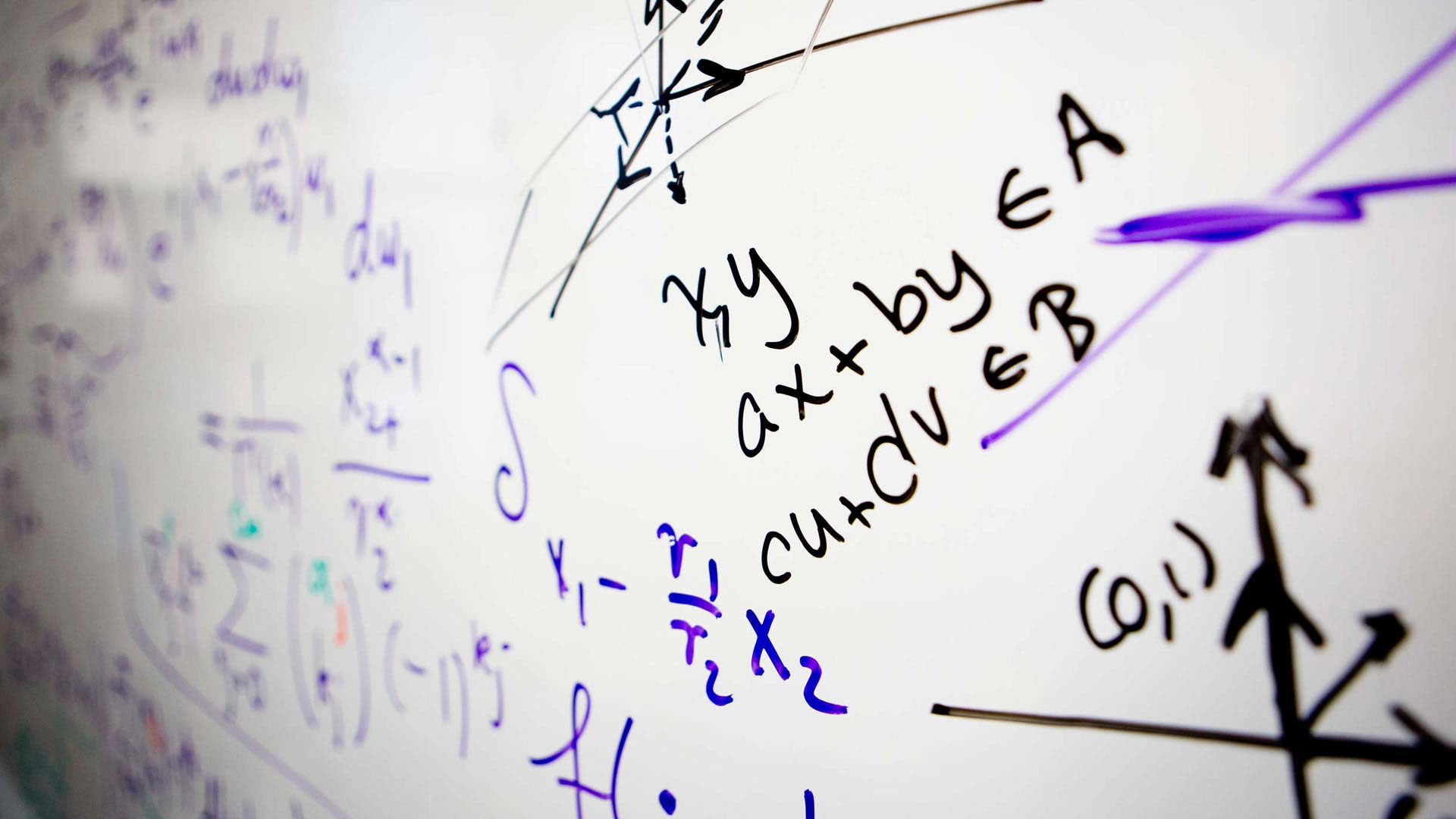
Beyond the academic community
CAM Industrial Opportunity Program
The CAM’s goal is to increase awareness of the uses of mathematics beyond the academic community.
The CAM Industrial Opportunity (CAMIO) is a significant initiative for achieving this goal. The fundamental goal of the CAMIO is to team faculty and students with an industrial partner, and work toward a model or solution to a problem proposed by the partner industry.
Past Colloquia Events
Contact Information
Associate Professor, Mikhail Shvartsman
Email: mmshvartsman@stthomas.edu
Mailing Address
Mail: OSS 201 Mathematics
2115 Summit Avenue
St. Paul, MN 55105
